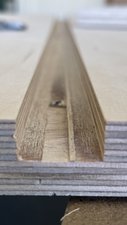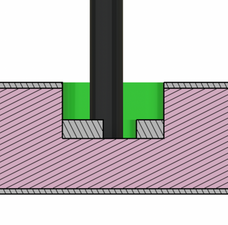Inconsistent cut depth (not levelling-related)
Hi! I noticed on some pocket cuts that the actual cut depth on neighbouring paths can vary by as much as 0.6mm - my only theory is that this is caused by the head flexing when cutting towards one path in one direction and the neighbouring one in the opposing one, but the difference seems extremely large, which is worrying me a bit, and is forcing me to do a lot of cleanup
Some details
- 1500x1500 machine, mafell router head
- these pockets are along the Y axis, but the same issue occurs when cutting in Y direction
- These particular ones were cut with a 6mm 2 flute downcut endmill, at about 12k rpm, 2000 mm/min, 3mm depth of cut, in birch ply
- stepover was quite conservative (about 3mm)
I’m also having problems with chatter and vibration in the router head - I’ll make a separate post about that, but mentioning it here as I wouldn’t be surprised if the problems are related


Is this a good question?
